Jaroslav Halak making most of his chance with revived Islanders
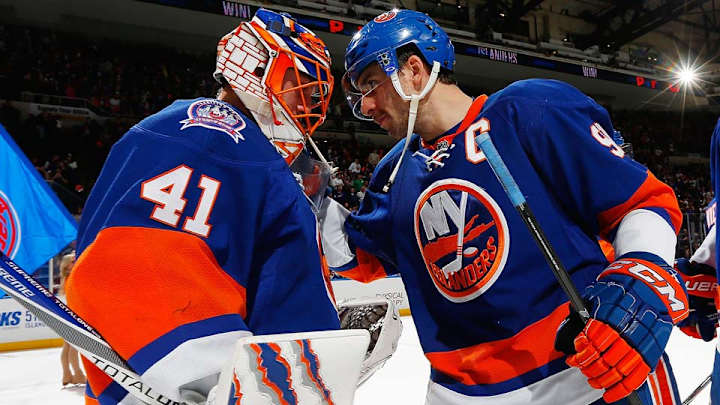
By Tim Leonard
UNIONDALE, New York — The chant started organically earlier this season, inspired by the simple, unabashed joy of success. Maybe that’s why it caught on so quickly at Nassau Veterans Memorial Coliseum, a place where there hasn’t been much to cheer for in the last three decades.
One fan’s joy became that of a handful of fans. One row became one section. Any time the Islanders scored a goal or won a game, more and more fans joined in, giving voice to their jubilation. As the victories mounted and New York rose to be one of the top teams in the Eastern Conference, those sections of the Coliseum that had been vacant for so long began to fill up. And the chant grew louder.
In the late 1970s and early ’80s, the Islanders were a juggernaut, a dynasty that won four consecutive Stanley Cups from ’79 to ’83. But during the 20 years after their last playoff series win, in 1993, they were often one of the worst teams in the NHL, making only six postseason appearances. Now the Coliseum is full again, with people eager for another championship, and for the chance to join in the rallying cry for one of the surprise teams of the season.
“Yes! Yes! Yes!”
It’s simple, but it says it all. Loudly. Jubilantly.
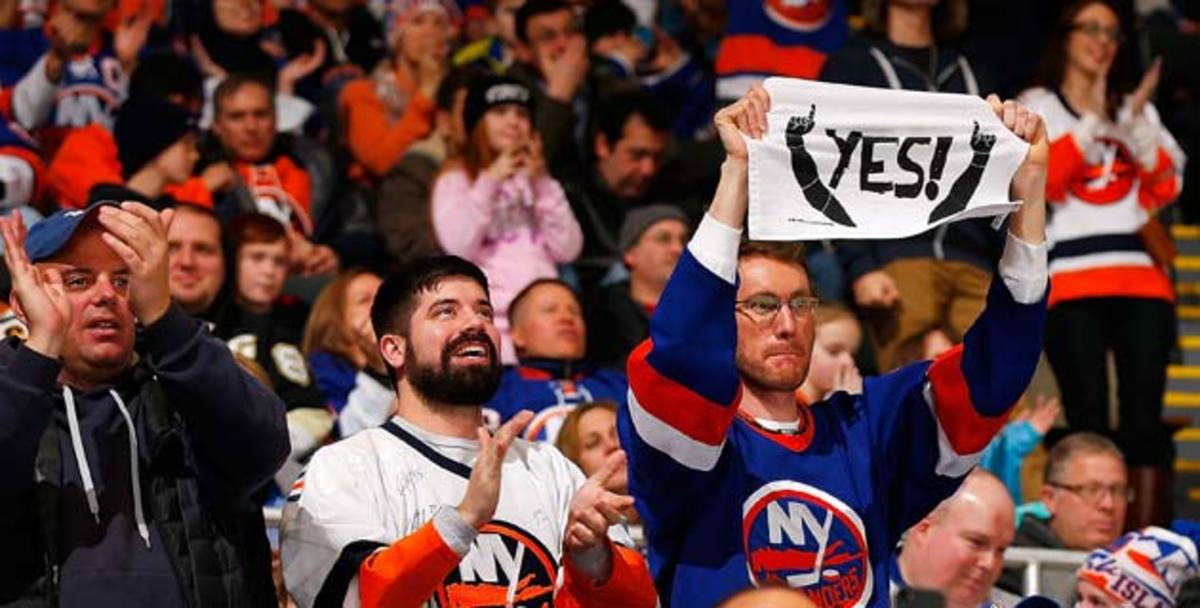
There are similarities between the New York team of today and the one that dominated the NHL more than a generation ago. The Islanders dynasty was led by Hall of Fame center Bryan Trottier, who topped the NHL with 134 points in 1978–79. The heartbeat of the current team is center John Tavares, who leads the league with 72 points. He’s getting plenty of help from four solid lines, all of which are contributing offense. The defense has been buoyed by two preseason trades that landed blueliners Johnny Boychuk and Nick Leddy, both veterans of Cup-winning teams.
But the most important addition has been goaltender Jaroslav Halak. The Islanders have gone through plenty of goalies since Billy Smith was stopping pucks and winning Cups while whacking anyone who dared come into his crease. None of them have given New York what Halak has this season.
“He’s been great,” says winger Kyle Okposo, who made his Islanders debut in March 2008. “He’s added that stability we haven’t had in a long time. With the exception of [Evgeni Nabakov] there for a little bit, we haven’t had that true No. 1 that can step in and play a lot of games for you and you know what you’re going to get out of him. He’s been huge for us.’’
Halak’s importance to New York isn’t defined by eye-popping numbers. It’s more the consistency and reliability he has given the Islanders between the pipes. It’s something that has mostly been lacking since the club last won a title of any note, the 1983–84 Wales Conference championship. No Islanders goalie has been able to play 50 games—with a goals-against average below 2.50 and a save percentage above .910—since Rick DiPietro did it in 2003–04. Including this season, New York has had 18 different goalies in the last 11 seasons. Halak has stabilized the position.
Halak (who is currently day-to-day with a lower-body injury) has played in 50 of the Islanders’ 72 games. He is 34-15-1, with a 2.46 goals-against average and a .912 save percentage. He has four shutouts this season. And though his 34 wins are only good for a tie for third-best in the NHL, they do break the franchise mark of 32 held jointly by Billy Smith, Chris Osgood and DiPietro.
“The biggest thing is guys have been playing well in front of me—it always helps when they keep the shots lower and the scoring chances lower,’’ Halak says. “Obviously, it’s been a lot of fun so far. It’s not over yet. Anything can happen.’’
It already has. The team’s drastic turnaround this season wasn’t expected. New York finished last season below .500 and did not make the playoffs one year after sneaking into the postseason and losing to the Penguins in a tough six-game first-round series.
Islanders GM Snow's shrewd moves earning him respect around the NHL
The key to the Islanders’ sudden ascension came last May, when general manager Garth Snow acquired Halak from the Capitals in exchange for a fourth round pick in the 2014 NHL Draft. Halak was about to become an unrestricted free agent, but the trade gave New York a two-month window to negotiate with him. Snow didn’t need two months. Three weeks after the trade, he signed the goalie to a four-year, $18 million deal that now looks like a relative bargain.
Joining the Islanders has given Halak stability after an incredibly unstable 2013–14 season. He was traded last February from the Blues to the Sabres in the deal that sent star goalie Ryan Miller to St. Louis. But before Halak even played a game for Buffalo, he was traded to Washington. Despite the upheaval, he had a solid season, going 29-13-7 in 52 games.
It was a busy—and aggressive—off-season for Snow, who further shored up his defense by acquiring Boychuk from the Bruins and Leddy from the Blackhawks. Both players recently signed to long-term extensions with New York. Both defensemen have helped shore up the team’s power play, and Boychuk has given the young Islanders a veteran presence in the locker room.
“Everything happens for some reason,” says Halak. “Before I signed, I knew we had some really young guys, some good guys here.... Picking up Nick Leddy and Johnny Boychuk before the season, that was a really big thing for our defense and for our team. That helped a lot. Johnny has been really good on the power-play and five-on-five. Same with Nick. It’s been a lot of fun so far, but we have a lot of work to do.’’
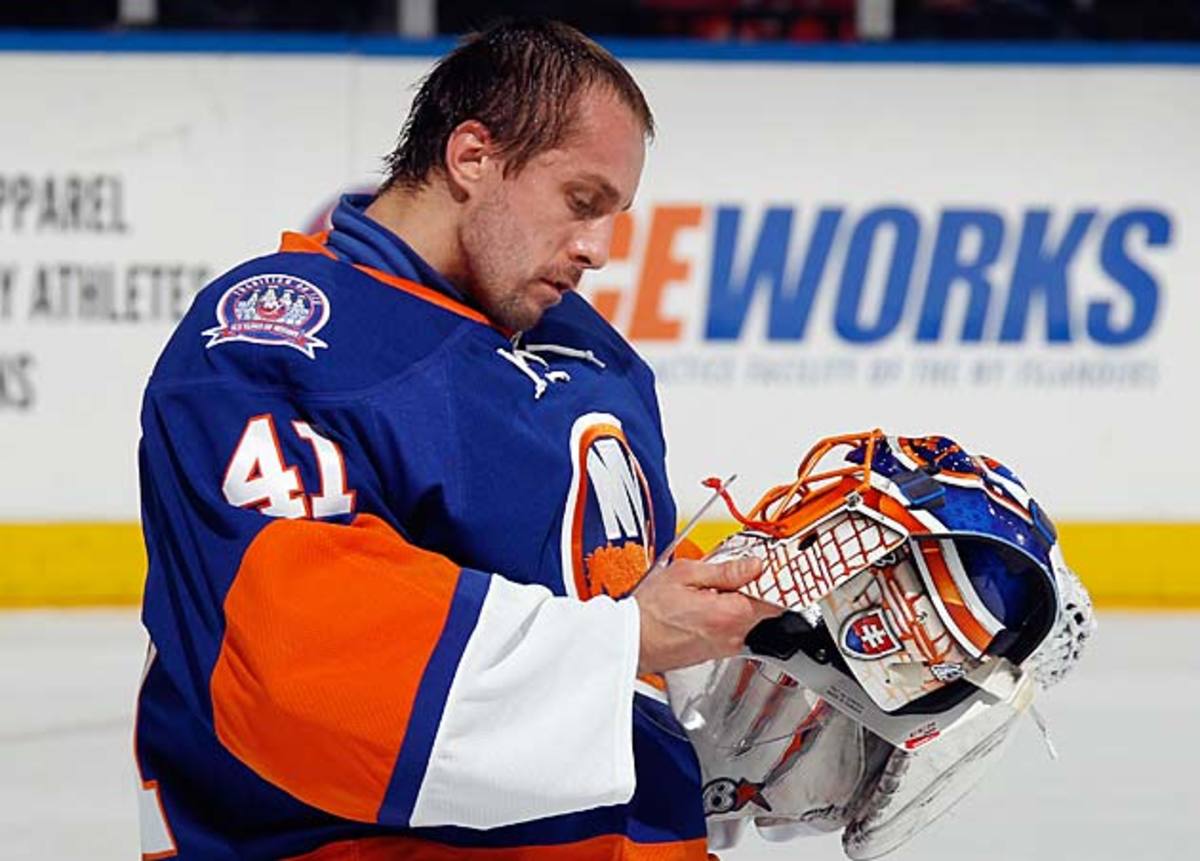
Halak is a quiet, unassuming type. He’s happy to have found a home, a place where he knows he will be for the next three seasons, even with the team moving to Brooklyn for the 2015–16 campaign. But beyond the stability, Halak relishes his chance to finally be a true No. 1 goalie.
It always had been Halak’s career goal. He split time with Carey Price in the Canadiens’ net early in his career, putting up the kind of numbers that led some to think he should be the starter. In 2009–10, Halak led eighth-seeded Montreal to the Eastern Conference finals before the Habs fell to the Flyers. Halak and Price were both unrestricted free agents after the season, but it was Halak who was traded to the Blues.
In St. Louis, Halak again put up good numbers, but struggled with his health and conditioning, which led to concerns about his toughness and desire. He wound up in a platoon with Brian Elliott. Later, Halak was briefly the No. 1 for the Capitals, who were clinging to fading playoff hopes late in the season.
But his short time in Washington was marked by an unfortunate incident involving then-coach Adam Oates, who told reporters that Halak asked out of a game against the Blues shortly after the trade.
After the season, the Capitals dealt Halak to New York, giving the Islanders a chance to solidify a position that had been a weakness for far too long. In the last seven seasons, New York has ranked no higher than 21st in goals-against. Obviously, that’s not the kind of defensive performance that gets a team to the playoffs.
“When they got me, they showed a lot of interest in me,” says Halak. “They traded for me. That doesn’t usually happen when a guy is about to be a free agent.... That showed they believe in me. There was interest on my side to be here. It’s a young team and will only get better with age. That’s why I decided to be here.’’
Halak has had plenty of highlights this season, but the pinnacle for him may have come in January, when he was in goal for back-to-back wins over Pittsburgh and the Rangers. The second of those victories was the Islanders’ first shutout of their rivals in Madison Square Garden since 1975. One day later, Halak was named as an injury replacement to the Eastern Conference All-Star team. The only downside to the honor was that he had to cancel a planned vacation to Miami’s South Beach.
“It was a nice win, a nice shutout, but the team deserves credit for it,’’ Halak says. “I’m not going out there trying to break any records. I’m trying to go out there, have fun and help the guys win a game. I’m sure they’re doing the same.’’
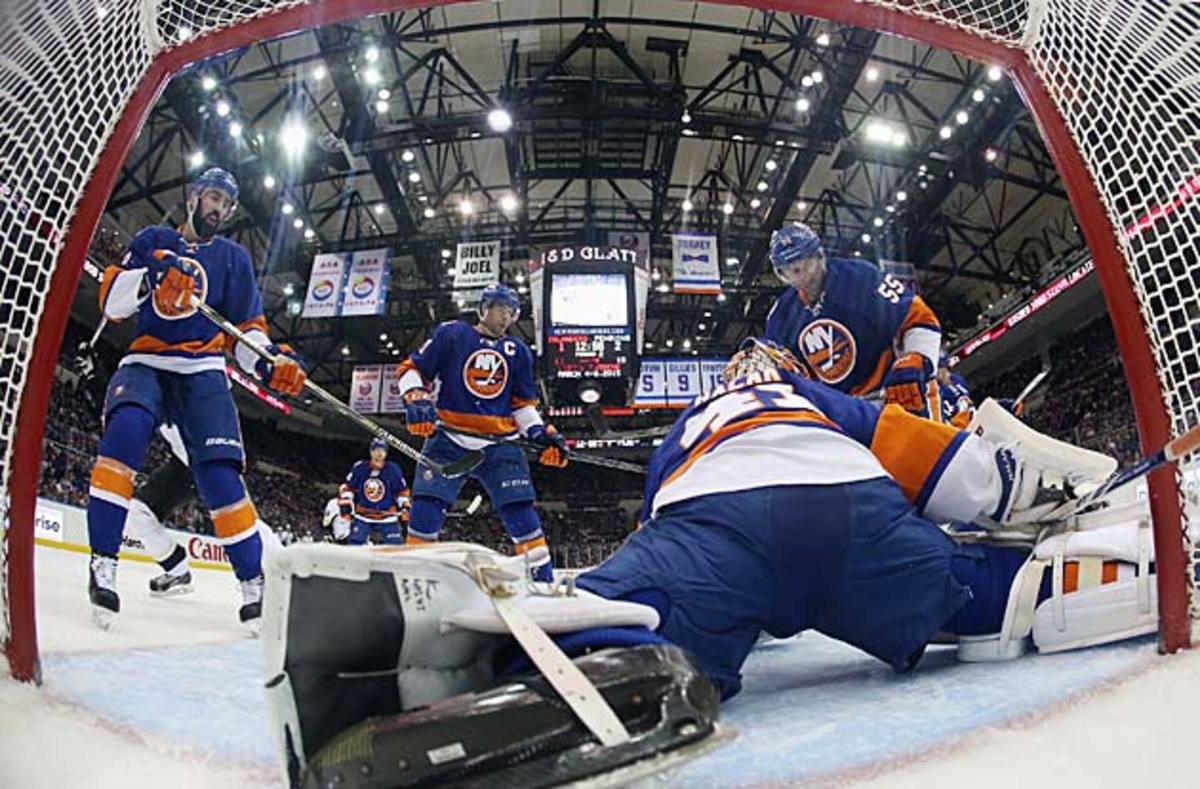
New York entered the season with a new mindset. Coach Jack Capuano told his players at the very first practice that they were going to have to earn their ice time. They have responded to their coach’s lunch-pail edict, and the Islanders have become a hard-working, gritty team that tries to control the puck as a way to limit shots from opposing teams.
“The organization and coaching staff challenged us in the offseason and in training camp about how much more they expected of us throughout the season, mentally and physically,” says Tavares. “Some of the things they were preaching and the attitude and things we were trying to accomplish, that’s been a big turnaround for us.... You can see the focus and the attitude of the group is really good. Calm composure, poised, confident, how much we believe in ourselves. The expectation to win. It’s not wanting to win or hoping to win, I think [winning is] expected. That’s been a big difference.’’
The fans have come to expect winning, too. The Islanders rank second in the NHL with 222 goals. That number is a testament to the depth and talent on the roster, much of it young and homegrown.
Much like the franchise’s Stanley Cup-winning teams, New York goes four lines deep. In fact, Canadian broadcaster Don Cherry called the Islanders’ hard-hitting fourth line of Matt Martin, Casey Cizikas and Cal Clutterbuck the best in the NHL. Nine players have reached double-figures in goals, led by Tavares, with 33. Rookie center Anders Lee is next, with 23 goals, and second-year forward Brock Nelson has scored 18.
Beware the slides of March: slumping teams not good Stanley Cup bets
The offense has carried the defense, which has occasionally struggled, frequently blowing comfortable leads. In addition to Halak’s injury, Leddy (lower body) has been out for the last week. Not coincidentally, New York has lost four games in a row, its worst skid of the season. The team's offense is suddenly struggling at even strength (the power play has been a problem area all season), leaving little margin for error. Defensive depth and concern about overworking Halak were major reasons why Snow acquired backup goalie Michal Neuvirth from Buffalo at the trade deadline. It is Halak’s consistency, his ability to hold a lead and grind out wins that have gained his teammates’ confidence and his return, as well as Leddy’s, should go a long way toward helping the Islanders right themselves before the postseason begins.
There are hopeful signs. During their skid, the Isles lost twice by only one goal (to the surging Rangers and the nearly as hot Senators) and once by two (to the Canadiens). They outshot their opponents 140-109 in those four games but a combination of mistakes, bad breaks and hot goaltending by the likes of Cam Talbot, Carey Price, Andrew Hammond, and Corey Crawford left them searching for answers.
“We have to work our way out of it,” defenseman Travis Hamonic said after the Isles’ 4–1 loss in Chicago on March 17. “We aren’t the only team that is going to go through a lull in the season. Unfortunately now is our time. The only way to get out of these circumstances is to work harder.”
Ranking the 10 most amazing NHL goaltending records
New York broadcaster Butch Goring, a key member of the Islanders’ great dynasty teams, has had a birds-eye view of the current group. He sees plenty of similarities between today and that glorious yesterday.
“The one thing this team has is depth,” says Goring. “This team doesn’t rely on one line. They get scoring from different sources. They have six solid defensemen who all can play, and the goaltending has been solid.... The biggest thing is balance. This team knows how good it is.
“They’re going from God-awful to being a legitimate contender. There’s no doubt this team can represent the East.... Watching this team is like watching when I played. The fans are into it. It seems like an eternity since the fans have been this energized.’’
If Jaroslav Halak continues to work his magic in the playoffs, that energy will only grow. The Isles and their chanting fans aren’t planning on taking “No” for an answer.
GALLERY: TOP 10 NASSAU COLISEUM NHL MOMENTS
Top 10 Nassau Coliseum NHL Moments
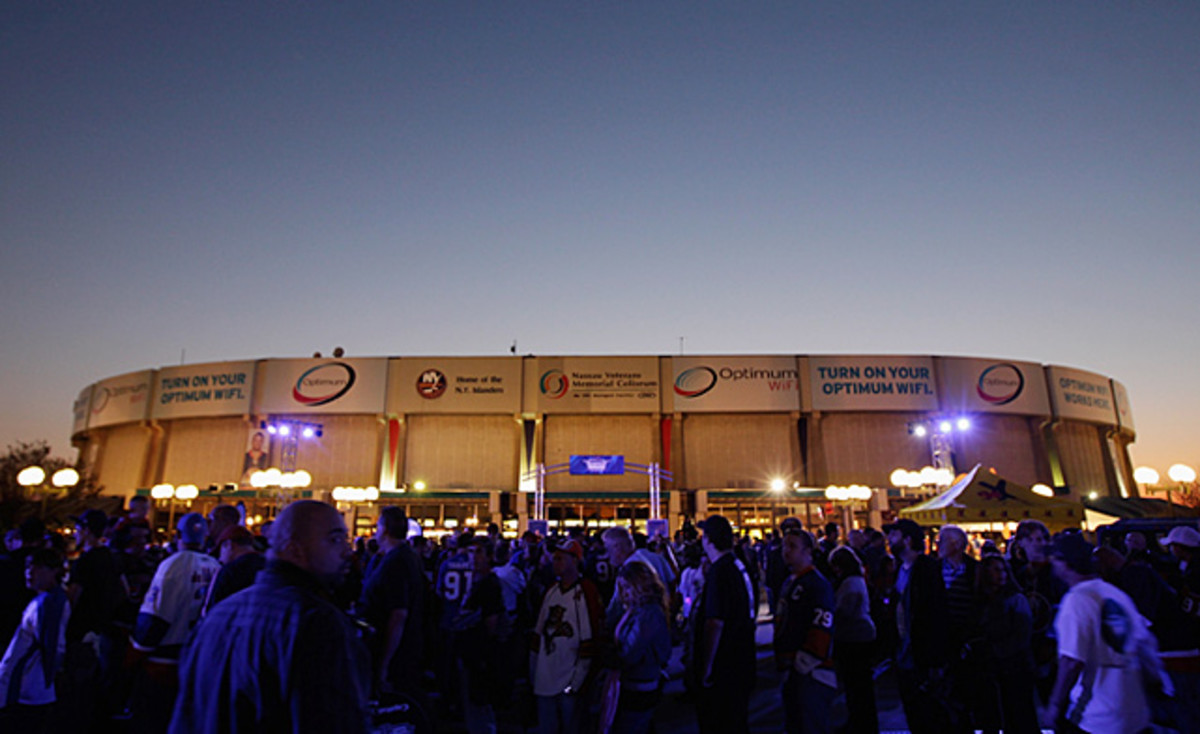
Now reviled as dilapidated and obsolete, the Nassau Veteran's Memorial Coliseum nevertheless has a proud history, though much of it belongs to the rapidly fading past. The NHL's second-oldest arena (after neighboring and newly renovated Madison Square Garden) cost $32 million to build and sits on the former Mitchel Field airbase. It hosted its first event (a New York Nets ABA hoops game) on Feb. 11, 1972. The following fall, the expansion New York Islanders took to the ice. They've called it home ever since, but will be moving to new digs in Brooklyn in 2015.
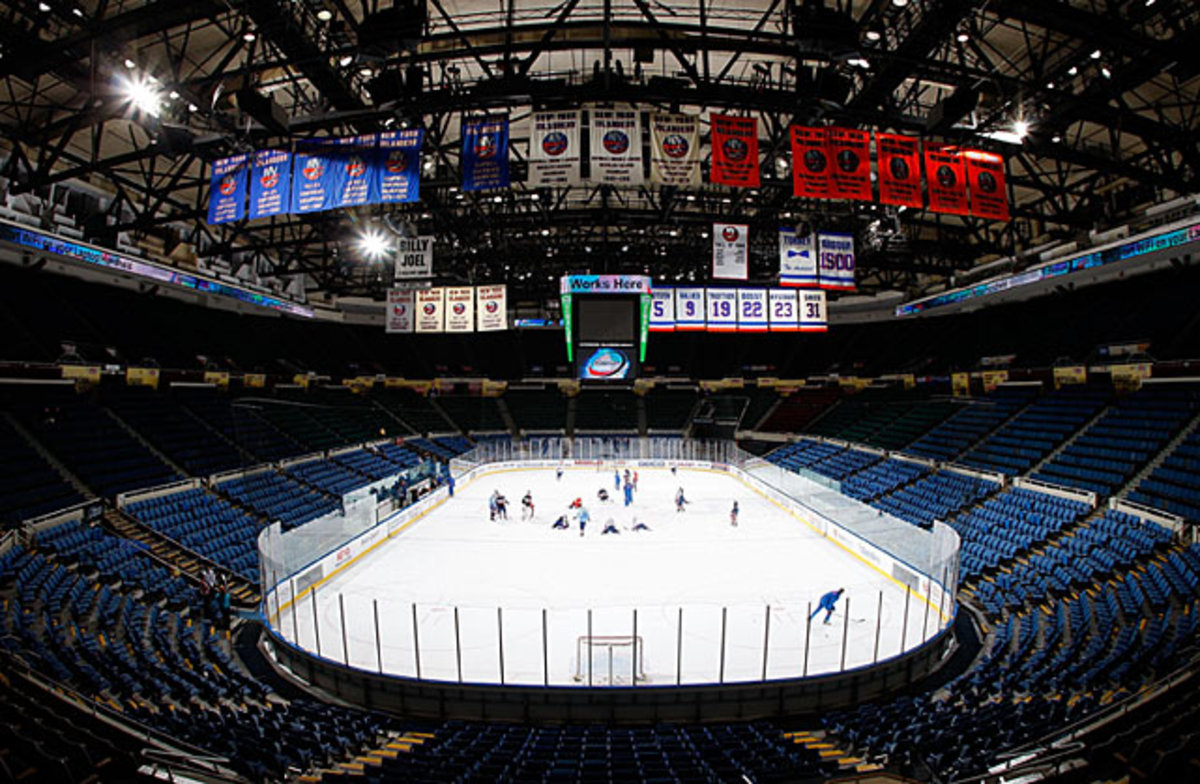
Seating 16,234 spectators, and with good sight lines, the coliseum has seen its share of classic hockey, including the Islanders' four Stanley Cup championships. Here are the 10 greatest NHL moments that took place in the old barn, as chosen by SI's Brian Cazeneuve.
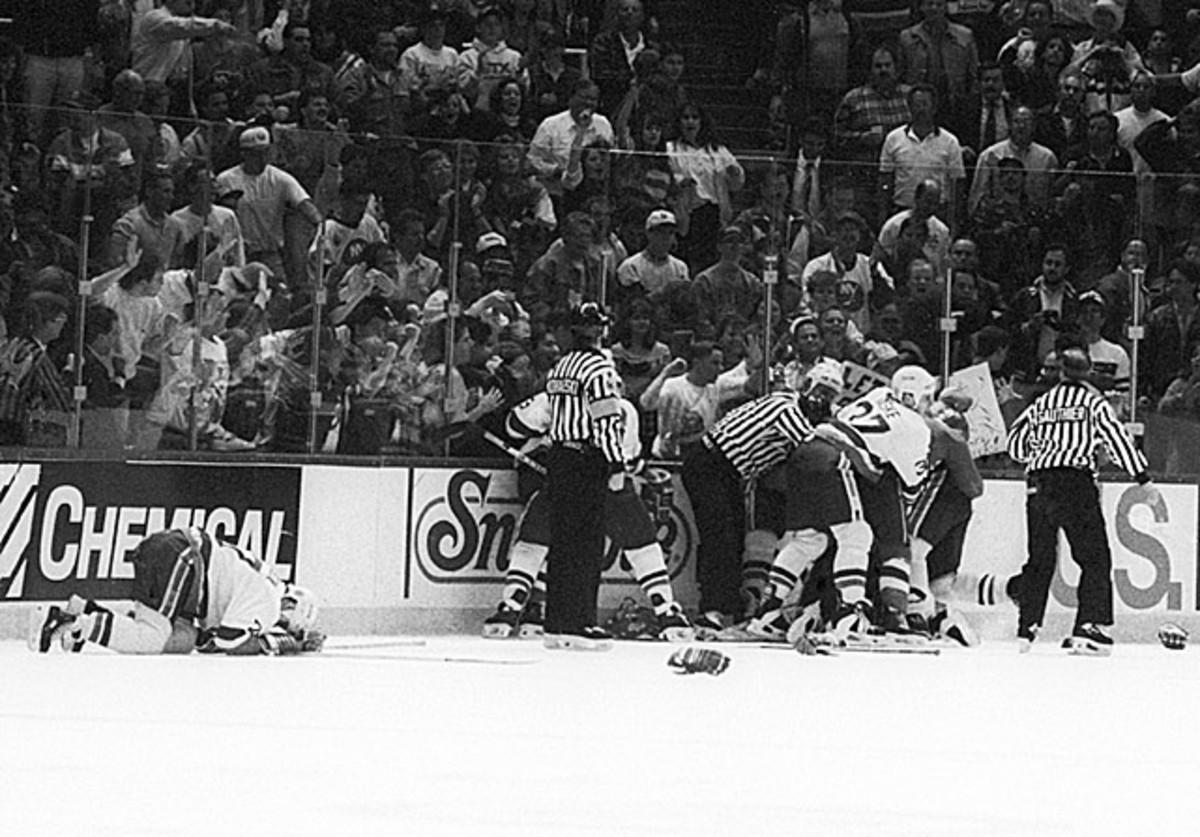
After winning three straight overtime games in their division sem-final series, the Islanders eliminate the Capitals in six with a 5-3 victory. Pierre Turgeon caps the win with an empty-net goal off a turnover by Washington forward Dale Hunter. The Caps' captain then takes out his frustration by shoulder-checking Turgeon into the boards long after the play ended. Steve Thomas leads the charge of Isles piling on Hunter, who receives a then-record 21-game suspension for his gratuitous hit. Turgeon suffers a separated shoulder and misses the next round, which the Isles win by beating Pittsburgh in seven.
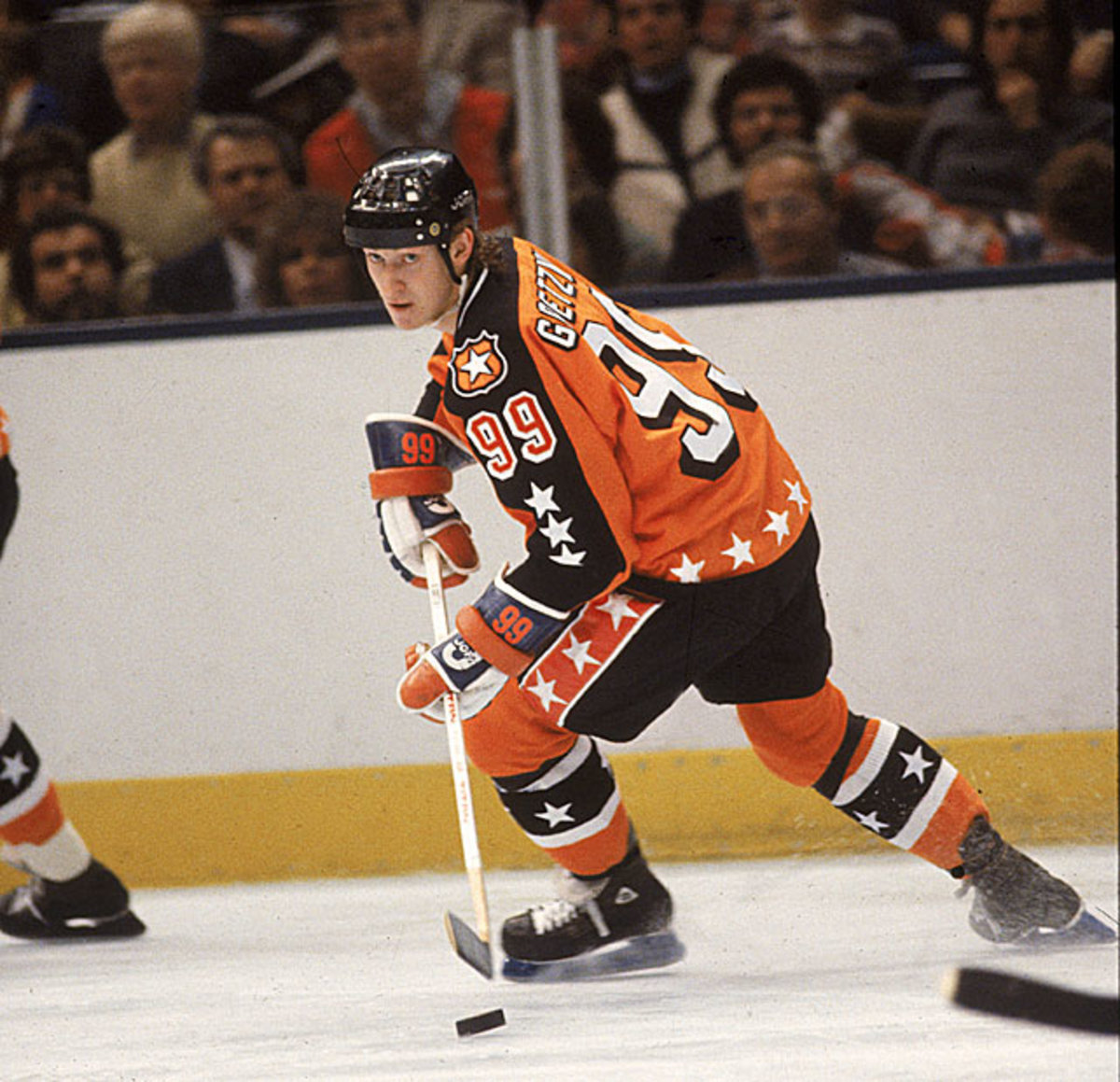
Wayne Gretzky scores four goals as the Campbell Conference defeats the Wales, 9-3, in the only NHL All-Star Game ever played at Nassau Coliseum. The Great One earns MVP honors for his efforts at the 35th annual classic, and amazingly was off the score sheet entirely for the first 46 minutes of a game that was only 3-2 going into the third period.
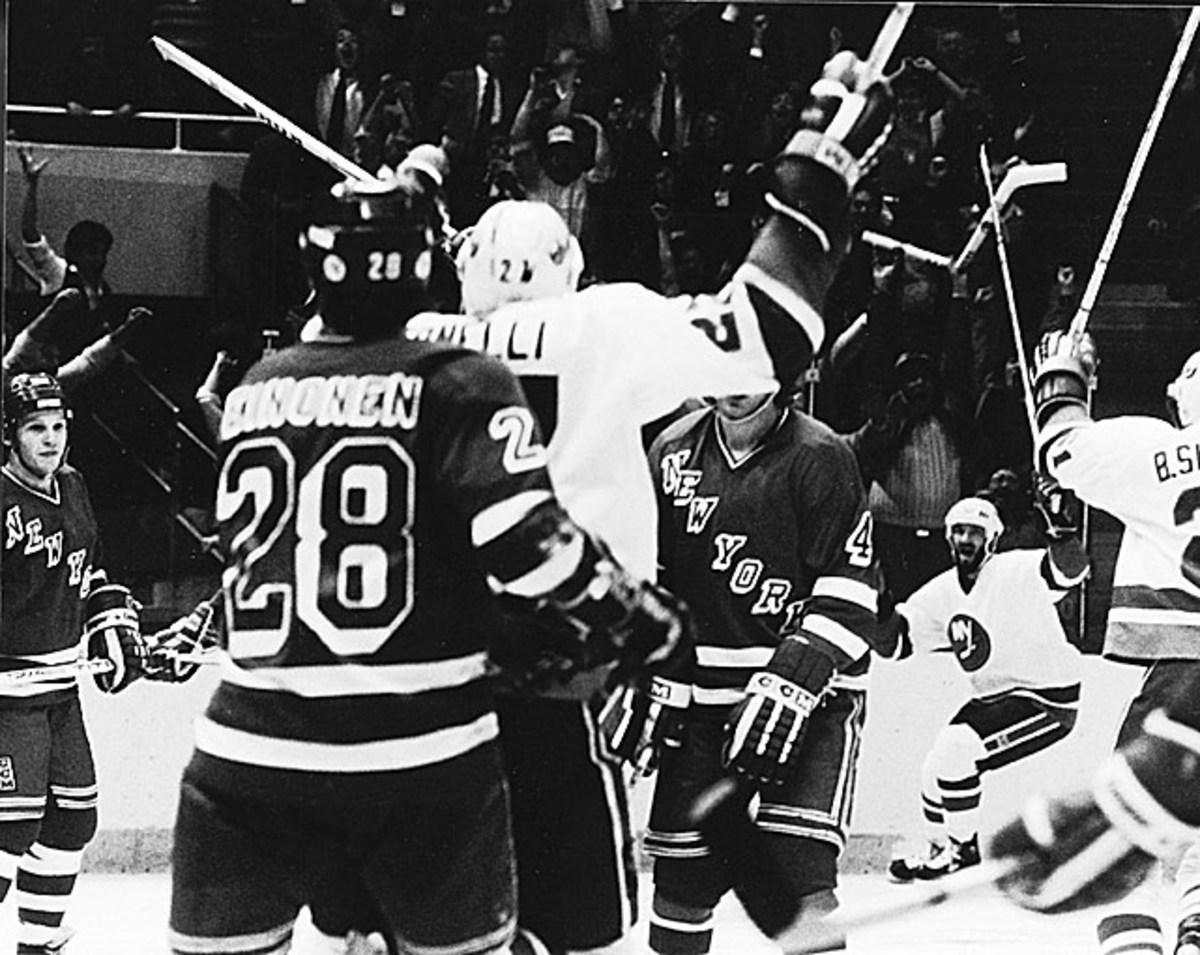
As the 1984 postseason begins, the Isles seem ripe for the taking when the Rangers score first in each game of their first-round series against the four-time Cup champs and hold them without a power-play goal. Don Maloney sends the nerve-wracking, decisive Game 5 into overtime with a stunning (and disputed) tying tally with only 39 seconds to go in the third period. Then low-scoring defenseman Ken "Wolfman" Morrow (second from right) becomes an unlikely hero by driving a screen shot past Rangers goalie Glen Hanlon at 8:56 of OT to keep the Islanders' Drive for Five alive.
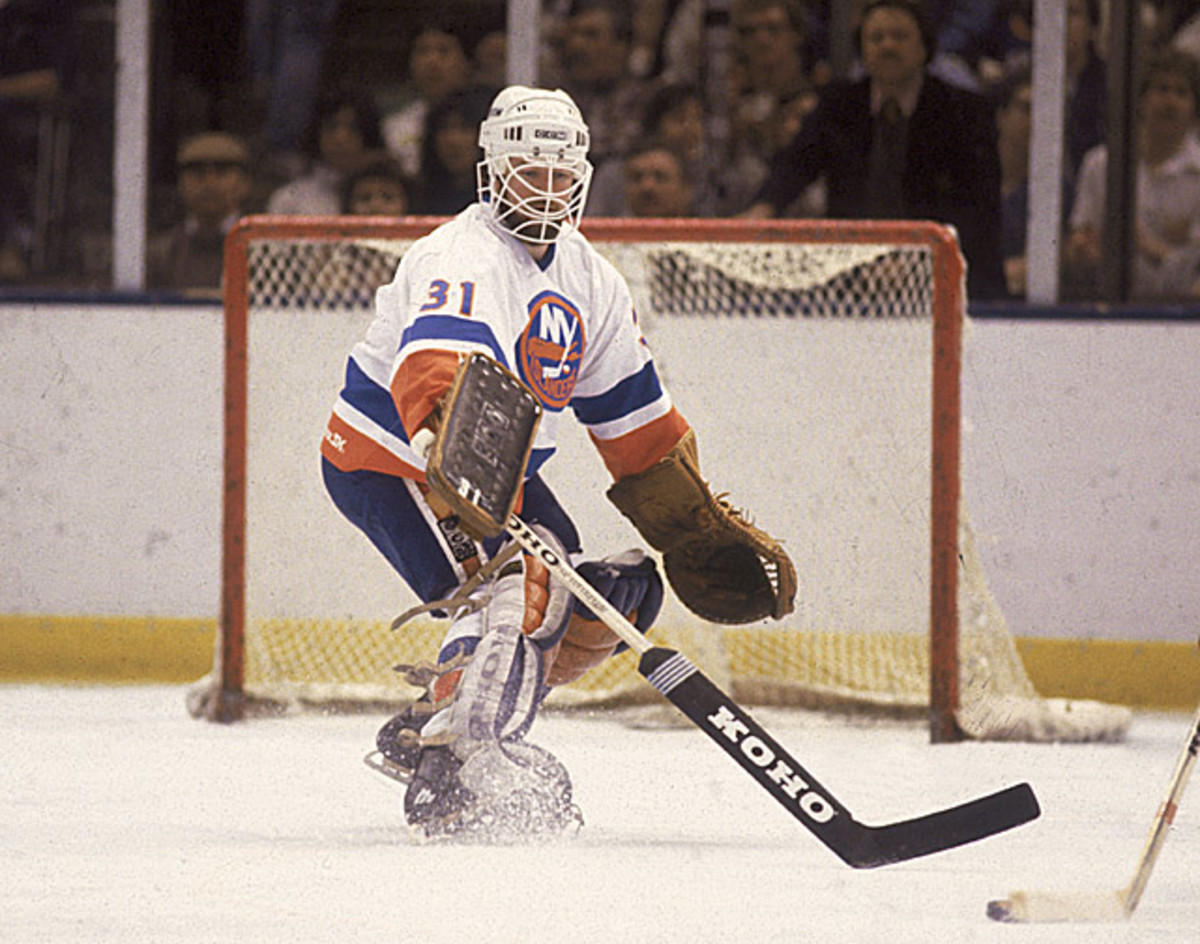
Anchored in net by Battlin' Billy Smith, the Isles rattled off a then-NHL record 15 consecutive wins (including nine at home) capped by John Tonelli's goal with 47 seconds left in the third period against the Colorado Rockies. (Final score: 3-2.) The game also marks the return of beloved former Isles netminder Chico Resch to the Coliseum as a visiting player. (The Penguins, losers of four of the Isles' magic 15, snap the streak 24 hours later with a 4-3 win at Pittsburgh's Civic Arena.)
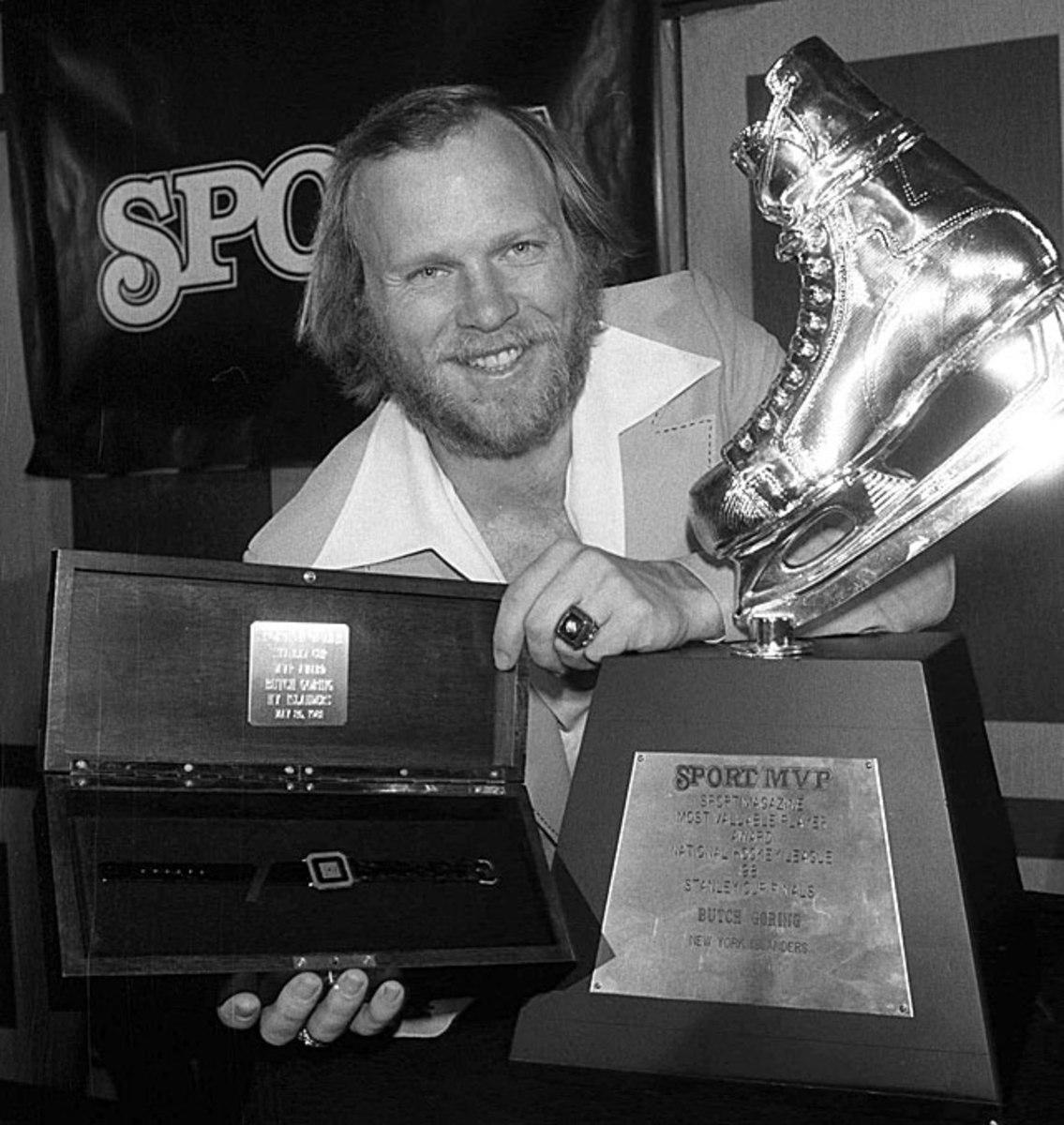
Butch Goring scores twice in the first period of Game 5 as the Islanders beat the Minnesota North Stars, 5-1, to capture their second straight Stanley Cup. Playing since the second game of the series with a 40-inch scar across his lip and tongue, Goring receives the Conn Smythe Trophy as playoff MVP while stalwarts Bryan Trottier and Denis Potvin see reduced minutes in the final game because of injuries.
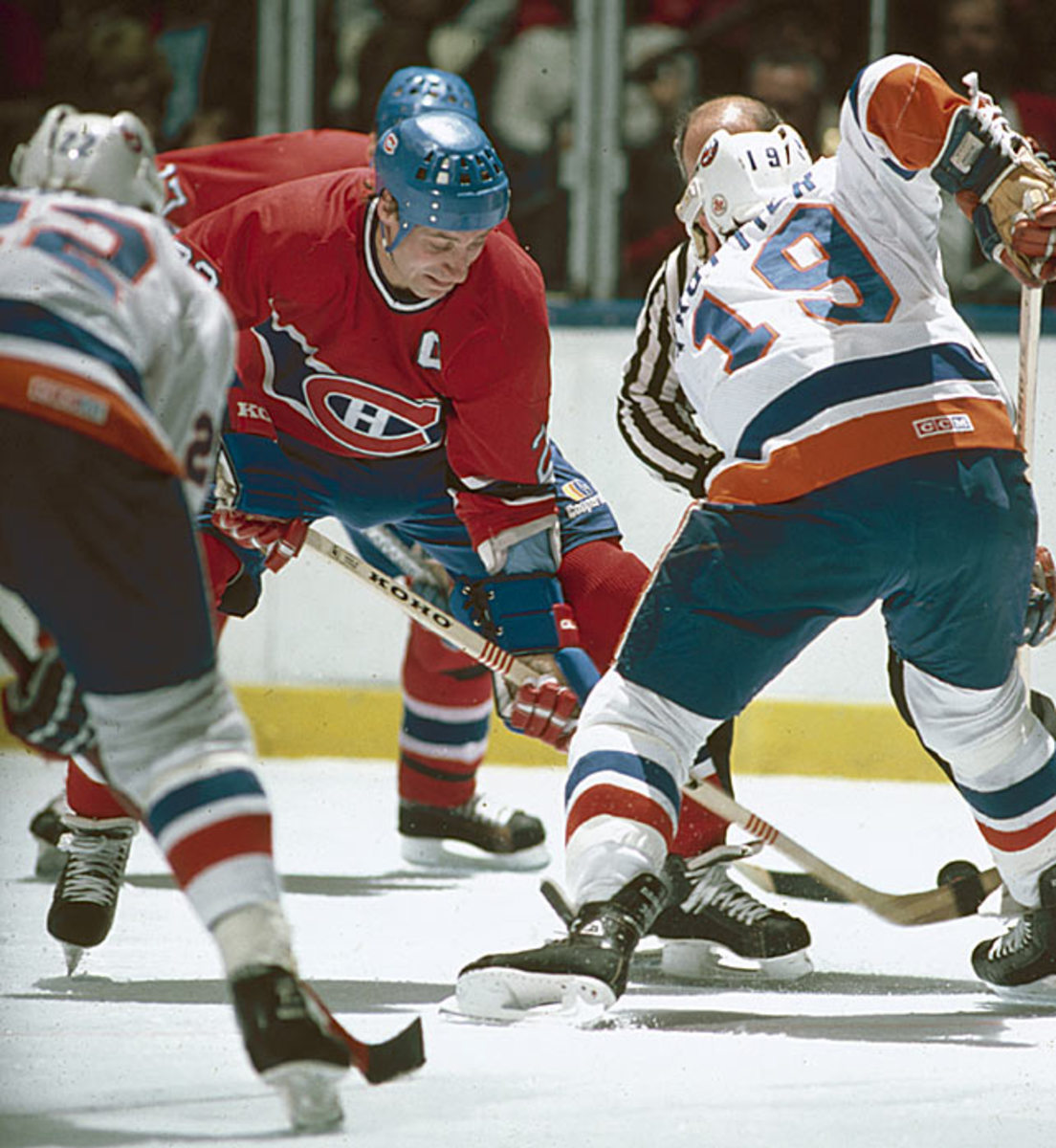
Mike Bossy scores two goals, including the game-winner, as the Islanders defeat the Canadiens, 4-1, to take the Wales Conference Final and advance to their fifth straight Cup final. With the victory, the Isles, who had lost the first two games in Montreal, capture their 19th consecutive postseason series, a record not only for NHL teams, but for all North American sports clubs, and one that is not likely to be broken. In the game, Clark Gillies and Pat Flatley also score for the Isles and Denis Potvin records his 98th playoff assist, surpassing the career mark held by Habs' legend Jean Beliveau.
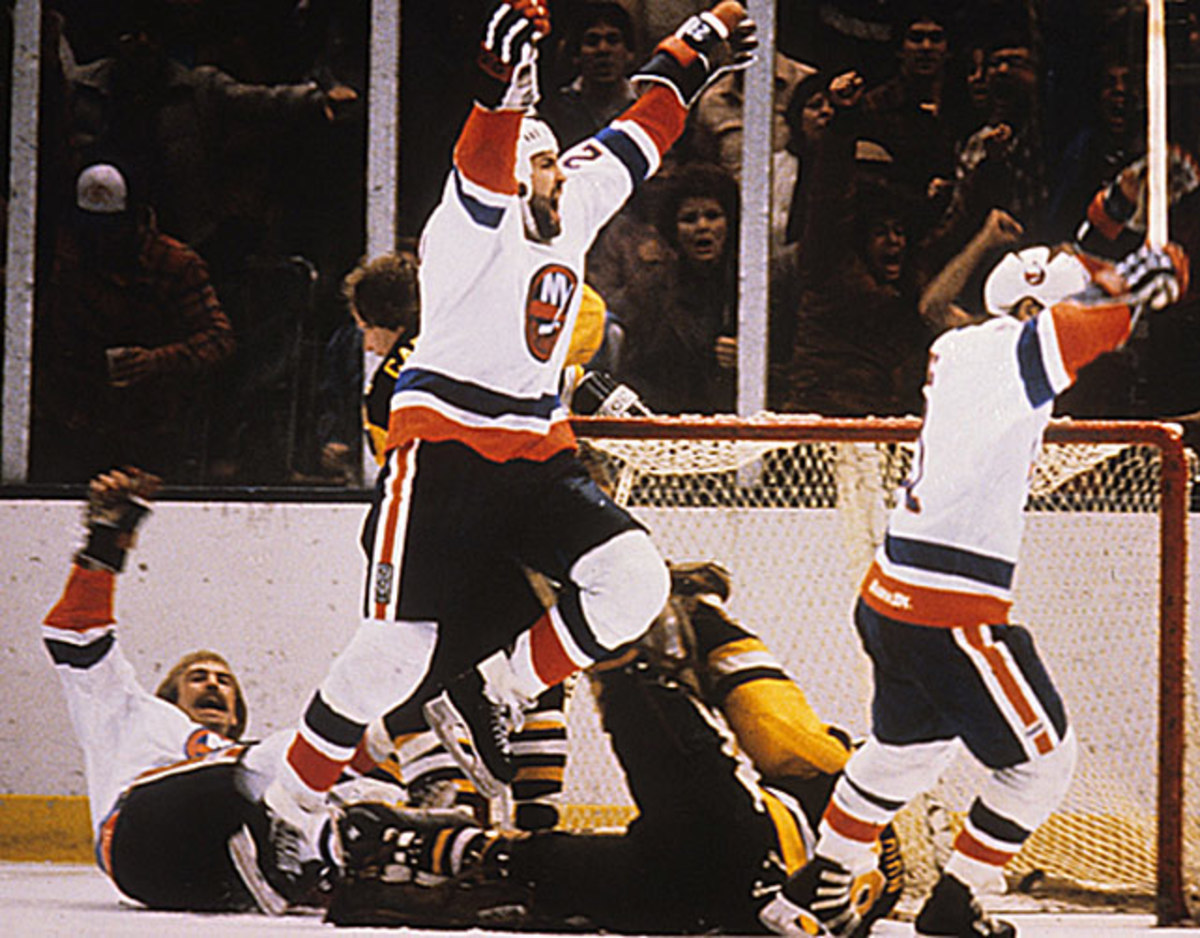
The Isles' Cup fourpeat would have ended prematurely if not for their dramatic comeback against the Penguins in the deciding fifth game of their opening round. New York trails 3-1 in the third period against the scrappy Pens before goals by Mike McEwen at 14:33 and John Tonelli at 17:39 send the game to overtime where Tonelli strikes again at 6:19 of the extra session to propel the Isles on their way to their third consecutive championship.
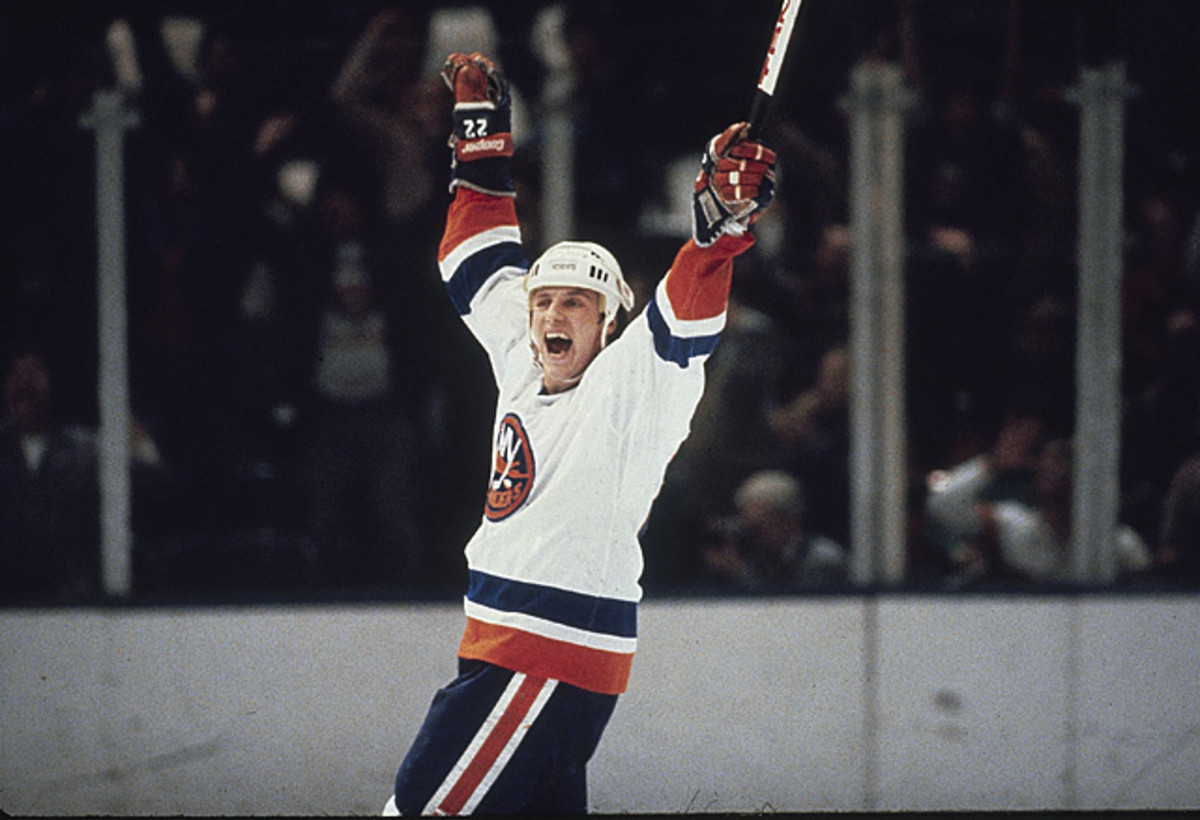
During a 7-4 win over Quebec, the game's ultimate sniper, Mike Bossy, joins Maurice Richard as the then-only players in NHL history to record 50 goals in 50 games. Bossy scores twice in the closing minutes, including the milestone tally with 1:29 to play in the third period. (A season later, upstart Wayne Gretzky would need just 39 games to score his 50th goal.)
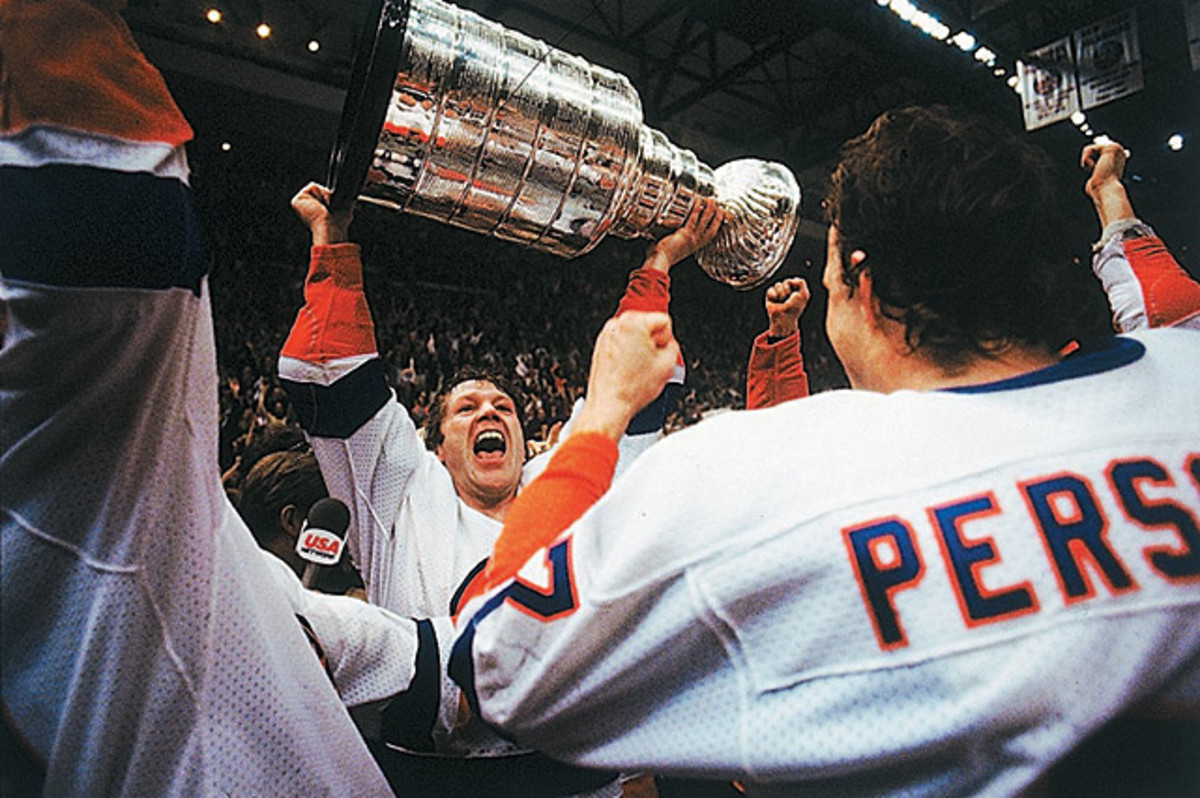
The Islanders complete a four-game sweep of the up and coming Oilers and win their fourth straight Stanley Cup. The Isles hold Wayne Gretzky without a goal in the series and their big guns -- Bryan Trottier, John Tonelli and Mike Bossy -- combine for three in a two-minute span of the first period of Game 4. Ken Morrow secures the silverware with an empty-net tally. Bossy finishes with a then-NHL record five game-winning goals in the playoffs, but Billy Smith wins the Conn Smythe Trophy.
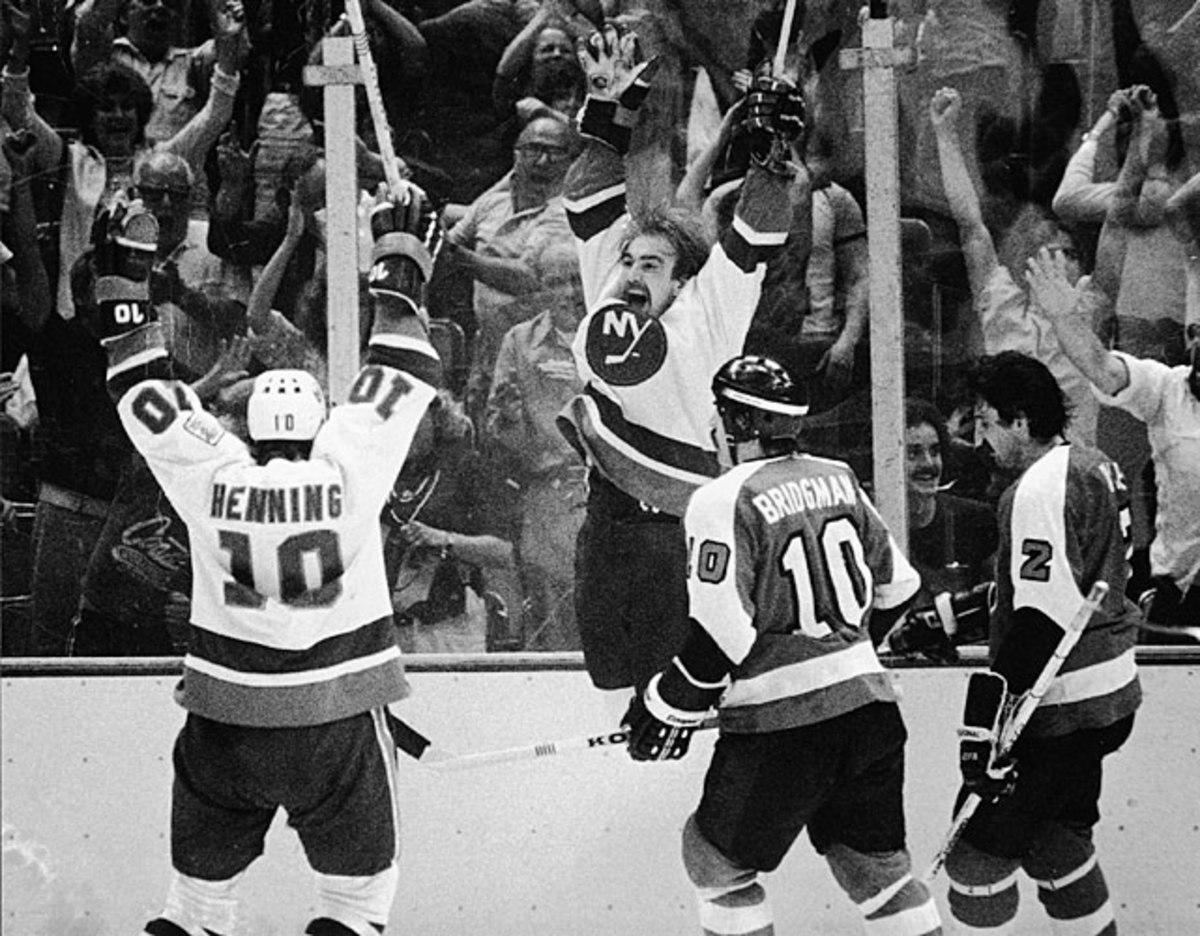
Up three games to two, Bobby Nystrom's first goal of the match gives the Isles a 4-2 lead late in the second period of Game 6. Then the favored Flyers, who had set an NHL record by going 35 games without a loss during the regular season, tie the score on third-period tallies by Bob Dailey and John Paddock. The packed Coliseum is on edge during the tense overtime until Nystrom tips John Tonelli's pass past Pete Peeters at 7:11 to give the Isles their first Stanley Cup.
